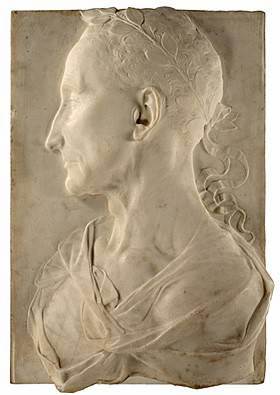
Desiderio da Settignano (c. 1429 – 1464)
Julius Caesar , c. 1460
marble
Musée du Louvre, Paris
Photo by Pierre Philibert
Desiderio da Settignano at the National Gallery of Washington
July 1, 2007 – Washington, DC – The first international exhibition devoted to Italian Renaissance sculptor Desiderio da Settignano (c. 1429-1464) comes to the National Gallery of Art-its only U.S. venue-from July 1 through October 8, 2007. Desiderio da Settignano: Sculptor of Renaissance Florence brings together approximately 28 works-many coming to the U.S. for the first time-by the artist and his immediate circle, ranging from highly original portrait busts of children to subtle low-relief carvings of religious subjects.
]]>
The exhibition was organized by the Musée du Louvre, Paris (where it opened October 27, 2006, through January 22, 2007), the Museo Nazionale del Bargello, Florence (on view through June 3, 2007), and the National Gallery of Art, Washington. The exhibition is supported by an indemnity from the Federal Council on the Arts and the Humanities.
“Visitors to the National Gallery of Art will be able to deepen their appreciation of Desiderio’s exceptional virtuosity as a sculptor and of the poetry of his innovations thanks to this collaboration with the Musée du Louvre and the Museo Nazionale del Bargello,” said Earl A. Powell III, director, National Gallery of Art. “Owing to the generosity of the lending institutions worldwide and the first publication of an English-language book on this artist, we are confident that Desiderio will receive the widespread esteem that he deserves.”
The Artist
Regarded as one of the greatest sculptors of the Renaissance, Desiderio inspired contemporaries to declare that he brought cold marble to life. He was born in the quarry town of Settignano, where his father and brother were stone cutters. Trained in Florence in the mid-15th century, Desiderio was strongly influenced and possibly taught by Donatello. Desiderio mastered expression and low-relief carving so completely that throughout the years, his portrait busts and marble reliefs were often misattributed to Donatello.
Follow us on:

